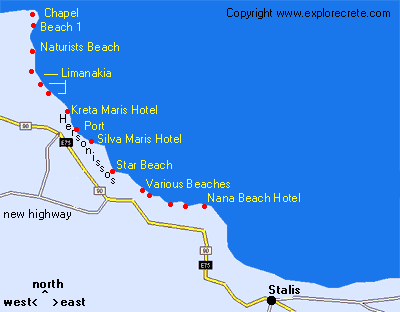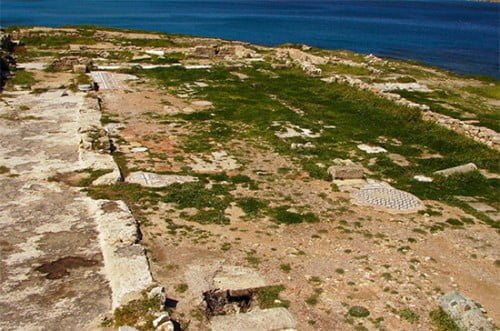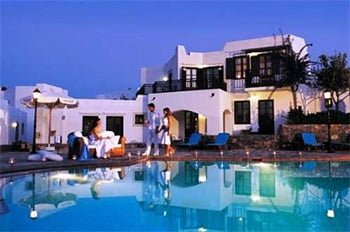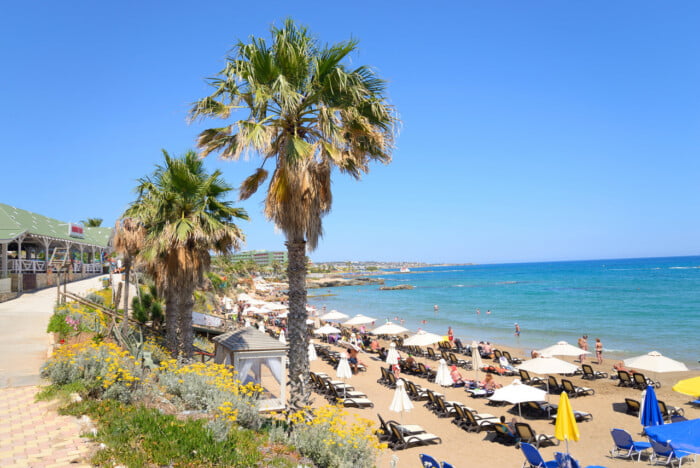Asterousia Mountains in South Crete
The Asterousia Mountains are the range running parallel to the south coast of Heraklion Prefecture, forming a natural wall between the coast and the Mesara plain. The Asterousia Mountains run from Maridaki, east of Pyrgos, and Charakas to Matala in the west.

The Asterousia Mountains, whose highest peak is Mount Kofinas (1,231 m.), are named after the local king Asterion, who married Princess Europa at the command of her lover, Zeus. Our forefathers had weird traditions, if we consider that Zeus turned himself into a bull to kidnap Europa from her home in Phoenicia in Asia. He brought her to Crete and made love to her under the plane tree at Gortyn. Three children were born of the union of Zeus and Europa: Minos, Sarpedon and Rhadamanthys.
Minos became king at Knossos, Sarpedon at Malia and Rhadamathys at Phaistos. However, as soon as Zeus achieved his aim and solved the administrative-religious problem of Crete, he gave Europa her marching orders and made her marry King Asterion. What can you say… Zeus was a god, after all, he probably knew something we mortals don’t. And of course, while Hera may have tolerated Zeus’s loves, she would never have given up her status of only wife.
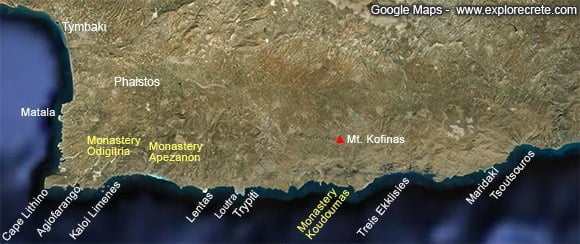
The climate of the Asterousia
The climate in the Asterousia Mountains is hot and dry. In summer, especially, rainfall is unknown. It usually rains in the winter months, but not more than 600-800 mm overall. In winter the streams start to run again, with small waterfalls on the steep cliffs, and a little grass begins to grow again in places.
Snow is extremely rare, but it may fall for a few days in cold winters.
Particularly on the coast below the Asterousia, temperatures stay high all year round, which is why in places like Lendas and Kali Limenes you will hear that the swallows do not fly south in winter.
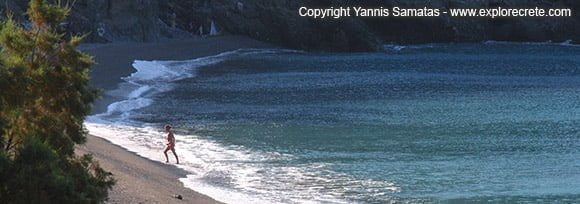
In summer strong northerlies blow here, preventing temperatures from reaching Saharan levels, while in winter hot southerlies blow from Africa and keep the temperatures high for the time of year.
Tourism in Asterousia
Tourism in the Asterousia Mountains is still taking its first steps. As in the rest of Greece, it is developing without serious strategic planning and based purely on private initiative, i.e. people who decide to build a few apartments or a taverna.
Many of these micro-entrepreneurs do a wonderful job, not because someone (the non-existent state) has trained them or checked that they have the right skills, but because they are hospitable, hardworking people who offer visitors the best they can.
The greatest problem is the lack of town planning in all the villages on the south coast, resulting in chaotic building which detracts from the beauty of the natural landscape.
Up in the Asterousia Mountains themselves there is nothing for tourists and other visitors, except for a new tourist unit in Kapetaniana and small kafeneia in the few villages nestling on the slopes.
On the coast, however, there are rooms for rent and tavernas in Lendas, Diskos and Loutra. You will also find tavernas in Kali Limenes and Platia Peramata.

Activities in the Asterousia Mountains
You can enjoy many activities in the Asterousia Mountains, but you will have to organise most of them yourselves.
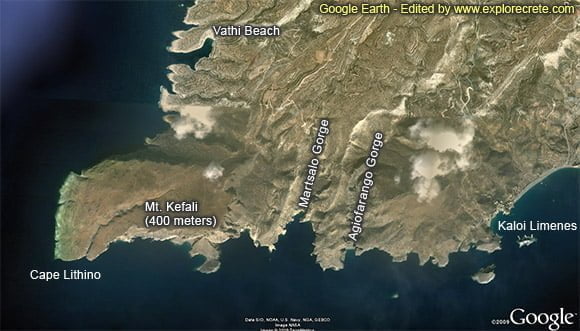
Human Presence in Asterousia
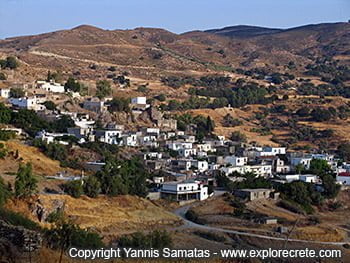
The Asterousia, with their harsh, arid terrain, are not a place conducive to human activity and transport, making this one of the most sparsely-populated areas of Crete.
It is hardly surprising, considering that the fertile Mesara plain, far more habitable, is only a short distance away.
Only shepherds have had a reason to prefer the Asterousia, as they still do today. However, there are now too many sheep and goats and the scanty grazing the mountain offers is too little to feed them
Yet in spite of the unfavourable conditions, the Asterousia Mountains have been inhabited since Neolithic times, as proven by finds from a cave in the village of Miamou on the road to Lendas.
In Lendas with its digestive waters there was a famous Aesculapium, a temple to Aesculapius, where patients came from all over Crete, seeking healing at ancient Leben, as Lendas was known.
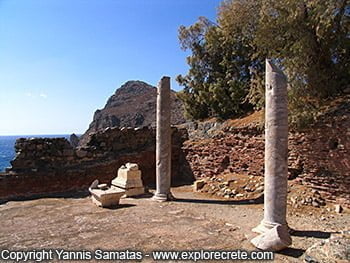
We also know that there was a peak sanctuary on Mt Kofinas in Minoan times. Systematic excavations have only been carried out in a few places in the Asterousia, and the future surely holds many surprises and discoveries.
The Asterousia Mountains have been inhabited continuously from antiquity to the present day. The only difference is that the coastal resorts are growing faster due to tourism.
The mountain villages, however, remain, and some of them are also showing signs of development. Examples are Kapetaniana, with its panoramic view of the Libyan Sea, and Ethia, where many of the old village houses have been restored, offering an admirable example of the preservation of traditional architecture in Crete.
Past and Present
The Asterousia Mountains have always been of great importance to Crete. They were once the natural wall defending the plain of the Mesara from pirates and other enemies. From their lookout posts on the peaks, Cretans were able to see enemy ships long before they reached the shore, and warn the local villages with beacons or smoke signals so they could organise their defences in time. The Germans also realised this in the Second World War, and established a lookout post on Mt Kefali on Cape Lithino to watch the Libyan Sea and the Bay of Mesara.
As for pirates, they would have been reluctant to climb the sheer slopes of the Asterousia to reach the well-hidden Mesara and its villages. The way was difficult and they would have lost many men to ambushes along the way, as the local Cretans obviously knew the area better than any stranger.
In any case, pirate raids were based on surprise and hit-and-run attacks, before the inhabitants could organise their defence, so an organised assault on Crete did not suit their tactics.
The Mount Athos of Crete
The Asterousia Mountains, with their steep slopes concealing many gorges and caves, became a paradise for hermits and ascetics from the earliest years of Christianity in Crete, to the point of being named the “Mount Athos of Crete”, corresponding to the great monastic centre of Chalkidiki in Northern Greece.
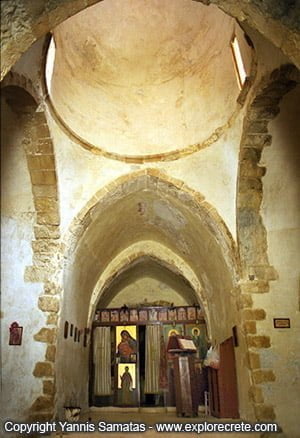
The fame of these hermits even spread outside Greece, to Mount Sinai and other hermitage centres of the East.
It is said that St Gregory the Sinaite was taught mental prayer by the hermit Arsenios in Agiofarango Gorge, teaching it in turn to the monks of Mount Athos.
The hermits lived a harsh life in the numerous caves of the Asterousia, deprived of material comforts.
Their simple life and refusal to engage in economic activity made the invading Venetians and Turks leave them alone, as there were no taxes to gather from them.
Thus the hermits continued to worship God in the most inaccessible parts of the Asterousia Mountains until the early 20th century.
Nature and Environment
Today the Asterousia Mountains continue to contribute to the Cretan economy with animal husbandry, bee-keeping and growing tourism on the south coast.
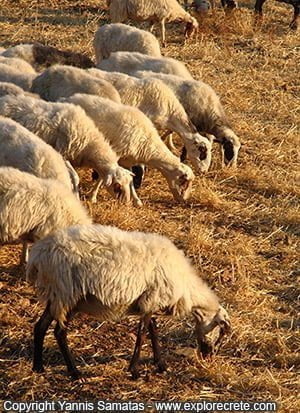
It is reported that 80,000 sheep and goats live on the slopes of the Asterousia, an impressive number considering how barren those slopes are. Rocks, stones and scanty earth in which tough bushes and a few trees grow, form the landscape of the Asterousia, which suffers from desertification more than any other part of Crete.
However, this kingdom of rock and dust, baked by the fierce summer sun, manages to provide refuge to large birds of prey such as the Griffon Vulture, the few Bearded Vultures now left, hawks and another 200 bird species, 112 of which are migratory and found here in spring, summer and autumn.
As for plants, in the Asterousia Mountains you mainly find frygana shrubs and hardy herbaceous plants which can survive the poor soil, heat and extensive dry periods.
Trees are few and far between, only found where there is no overgrazing. Common species are pine, cypress, carob and wild olive. Thus we have the wood of Calabrian pine on the south slope of Kofinas, while there is a small grove of Cretan date palms at Agios Antonios near Maridaki and Tsoutsouros.
Palm groves are also found in other parts of the Asterousia, such as Martsalo Gorge, south of Odigitria Monastery.
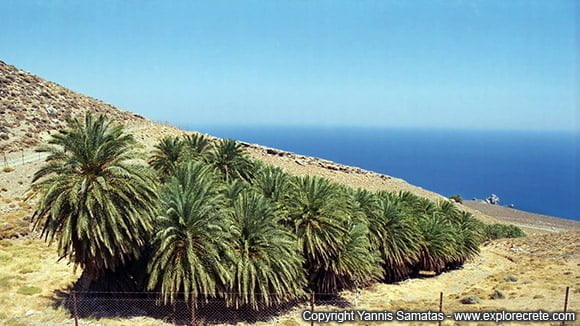
Twenty-two endemic plant species grow in the Asterousia, and many small animals (hares, martens, badgers, hedgehogs), reptiles and insects also find food and shelter here. There are also nine species of Cretan snail, of which Albinaria terebra is only found in the Asterousia Mountains.
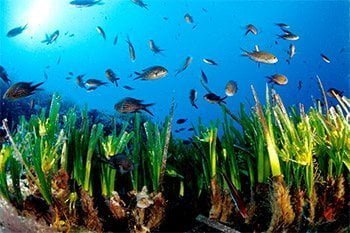
As for the shore, the sea caves on inaccessible parts of the coast offer shelter to Mediterranean seals (Monachus monachus).
The sea off the Asterousia Mountains contains meadows of Posidonia seagrass (Posidonia oceanica), protected under EU legislation because it is not only an indication that the sea is clean and healthy, but also vital to the survival of many marine organisms.
The depth of the Libyan Sea, off the south coast of Crete, also favours the development of marine life and forms a suitable habitat for many fish and other sea creatures.
Unfortunately overfishing and destructive fishing methods (trawling, dynamite) have reduced stocks and catches.
- Hiking in Asterousia Mountains
- Crossing the Asterousia, how to make a drive across the Asterousia an unforgettable experience
- Kofinas, the highest peak of the Asterousia Mountains, the apples of Kofinas and climbing the peak
© explorecrete.com All Rights Reserved. Reproduction or copying without permission is prohibited.

